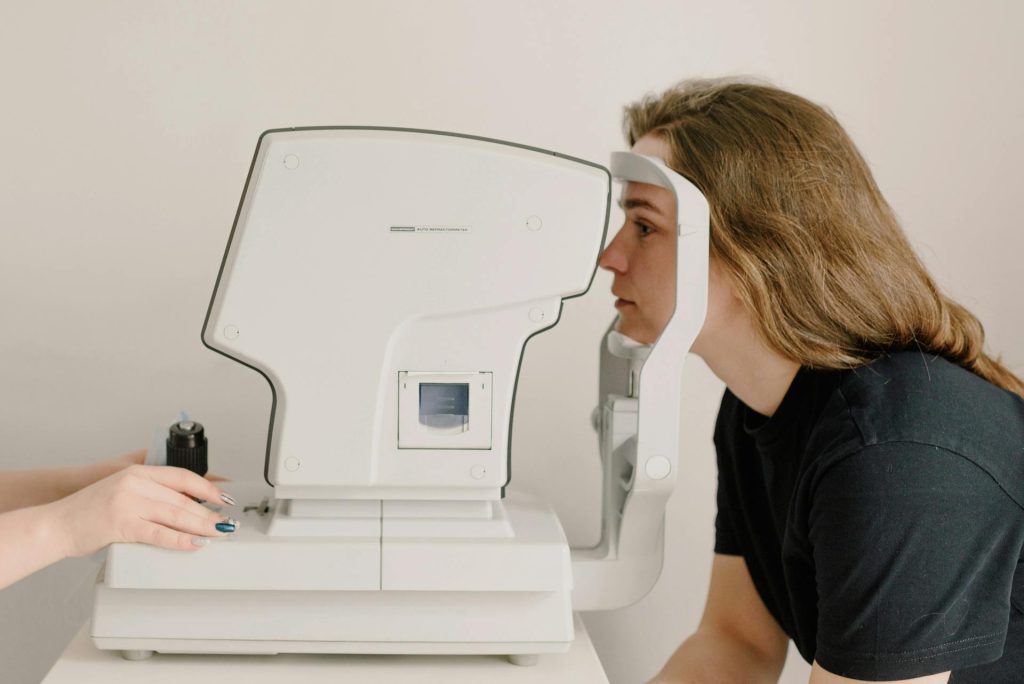Navigating the world of eye care can be confusing, especially if you’re new to needing corrective lenses. If you find yourself squinting at fine print or struggling with your vision, you might be wondering if you need an eye exam before getting eyeglasses. This guide is tailored to newcomers and individuals seeking clarity on how to address their vision problems effectively.
Understanding the Importance of Eye Exams
Before jumping to the vision solution, it’s crucial to understand the value of eye exams. Eye exams are not just about getting a prescription for glasses or contact lenses; they are comprehensive evaluations of your eye health. During an eye exam, an optometrist or ophthalmologist can detect early signs of eye diseases, general health issues, and unique vision problems that require specialized care.
- The Comprehensive Nature of Eye Exams: An eye exam typically includes a range of tests to evaluate your vision and the health of your eyes. From the simple reading chart to more complex procedures, eye professionals assess your eyes for various conditions, such as glaucoma, cataracts, macular degeneration, and diabetic retinopathy.
- Vision Developing and the Need for Corrective Lenses: The human eye is a remarkable organ that continues to develop as we age. Many vision problems are benign and are simply part of the eye’s natural growth. Near-sightedness, farsightedness, and astigmatism are common refractive errors that can be corrected with glasses. Understanding your eye’s current state and how it might change over time is key to ensuring long-term eye health.
The Myths Surrounding Eyeglass Purchase
Many believe that you can simply purchase glasses without an updated prescription. However, for anyone with a lens prescription older than a year (in some states, two years), it’s prudent to get an eye exam before purchasing new glasses. This is because vision can change gradually, and an outdated prescription could lead to discomfort or exacerbate underlying vision problems.
- Online Vision Tests: A Contested Solution: In recent years, online vision tests have emerged as a seemingly convenient solution for busy individuals. However, these tests often offer a limited evaluation of vision and do not check for eye diseases. They may be suitable for monitoring vision changes but should not substitute regular visits to an eye care professional.
- The “One-Size-Fits-All” Approach: Purchasing non-prescription reading glasses from a drug store might seem like a quick fix for close-up vision problems. While they can provide some temporary relief, these glasses do not account for various factors that a proper prescription would, such as the exact measurement from the pupil to the lens, known as pupillary distance (PD), and the specific strength needed for each eye.
The Path to New Glasses
To acquire a new pair of glasses, one will traditionally follow these steps:
- Scheduling an Eye Exam: The first step is to schedule an eye exam. This can be with an optometrist or ophthalmologist, depending on the complexity of your case. Bring any relevant medical records and be prepared to discuss your medical history, family’s history of eye diseases, and any current medications.
- Understanding Eye Exam Results: Once the eye exam is complete, your doctor will provide you with a prescription for eyeglasses if needed. This prescription will specify the lens power required for each eye, typically in the form of a series of numbers that an optician will use to craft the lenses.
- Choosing the Right Pair of Glasses: With your prescription in hand, you can visit an optician to select frames and order your new eyeglasses and sunglasses. Take your time to choose frames that not only compliment your face but also match your lifestyle and personal style.
- Fitting and Adjusting: An optician will professionally fit your new glasses to ensure they sit comfortably on your face and provide you with the clearest vision. This step is critical for long-term wear, as poorly fitted glasses can cause headaches and eye strain.
Monitoring Your Eye Health
Regardless of whether you wear prescription glasses, contacts, or have undergone a surgical procedure to correct your vision, monitoring your eye health is essential. Regular eye exams, at least every one to two years, are recommended for most adults, and more frequent visits may be necessary for those with risk factors for eye diseases.
Certain symptoms should prompt an immediate eye examination, such as sudden vision changes, persistent eye pain, flashes of light, and the perception of halos around lights. These can be signs of serious eye problems that require prompt attention.
Final Words of Clarity
The decision to get eyeglasses is not just about fashion or convenience. It is part of the broader context of managing your eye health and ensuring that you can see clearly to live your life to the fullest. By understanding the importance of eye exams and professional prescriptions, you are taking the first steps in maintaining good vision.
If you’re still unsure about your vision and whether you need an eye exam, it’s best to err on the side of caution and schedule an appointment with an eye care professional. Your eyesight is too valuable to take unnecessary risks. For continuous eye comfort and the best vision outcomes, there’s no substitute for professional expertise and comprehensive eye assessments.

